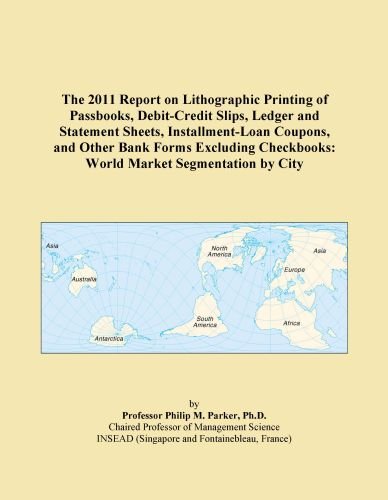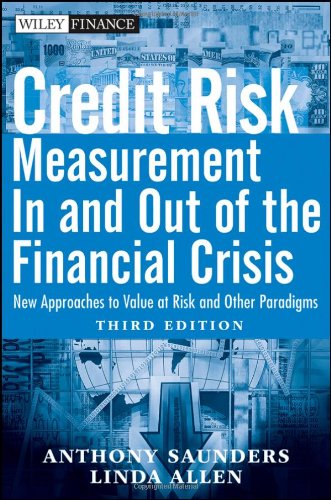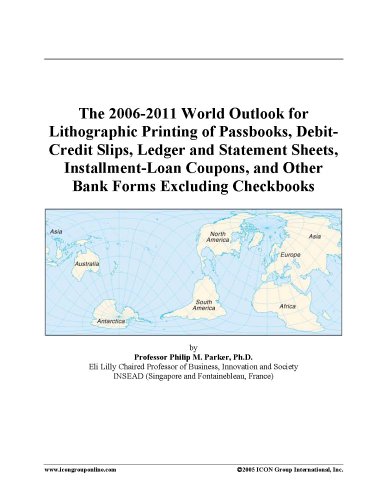Tuesday, March 27, 2012
Wednesday, February 29, 2012
10k White or Yellow Gold Gemstone Cushion Cut Diamond Pendant
!: Save 10k White or Yellow Gold Gemstone Cushion Cut Diamond Pendant Free Shipping
Brand : Amazon.com CollectionRate :

Price :
Post Date : Feb 29, 2012 14:34:08
N/A
Enjoi Resin 7 Eight Inches Skateboard Deck - 8" X 31.9"... On Line Yamaha Psr 220 Keyboard Cheap Condo Life... Order Now
Sunday, February 19, 2012
4.00 ct. TW Round Cut Diamond Engagement Ring in 14 kt. Pave Mount
!: Catalog 4.00 ct. TW Round Cut Diamond Engagement Ring in 14 kt. Pave Mount purchase
Brand : M. A. Jewelry DesignsRate :

Price :
Post Date : Feb 19, 2012 18:09:09
N/A
This engagement ring has a beautiful round brilliant center diamond weighting 1.50 carat displaying stunning F white color and sparkling clean VS-2 clarity. The 14 karat white gold mounting this dazzling diamond sits in has another 2.50 carat of round accent diamonds all with the same top quality color and clarity bringing the total weight of this ring up to an amazing 4.00 carat.
Saturday, February 11, 2012
Sterling Silver Heart Shape African Amethyst Stud Earrings (6mm)
!: Purchasing Sterling Silver Heart Shape African Amethyst Stud Earrings (6mm) Review
Celebrate the royal essence of amethyst, February's birthstone, when accessorizing with the classic Sterling Silver Heart Shape African Amethyst Stud Earrings. A unique concave-cut amethyst stone reveal a rich purple hue within a 925 sterling silver three prong-set. The 6mm heart-shape is the perfect size to create a colorful presence and is appropriate to wear for casual or formal occasions. The pair is secured by friction-back style posts.
Dj Max Portable 3... The Cheapest Edu-kitting Kids Recycled Bird House Kit... Buy Now Online Tennis Knockdown Targets - Set Of 2...
Tuesday, January 31, 2012
Real Estate Loans & Credit Lines in the US - Industry Risk Rating Report
!: Wholesale Real Estate Loans & Credit Lines in the US - Industry Risk Rating Report buy
This Industry Risk Ratings report from IBISWorld evaluates the inherent risks associated with the Real Estate Loans & Credit Lines in the US industry. Industry Risk is assumed to be 'the difficulty, or otherwise, of the business operating environment'.
The report looks at the operational risk associated with this industry. Three types of risk are recognized in our analysis. These are: risk arising from within the industry itself (structural risk), risks arising from the expected future performance of the industry (growth risk) and risk arising from forces external to the industry (external sensitivity risk).
This approach is new in that it analyses non-financial information surrounding each industry. Industries are scored on a 9-point scale, where 1 represents the lowest risk and 9 the highest. The Industry Risk score measures expected Industry Risk over the coming 12-18 months.
Industry Definition
The industry is comprised of non-depository enterprises that specialize in lending activity. However, unlike banks and other traditional lenders industry participants do not rely on deposits to issue loans. Instead, non-depository firms’ provide lending by selling securities (i.e. bonds, notes, stock) or insurance policies to the public. In addition to direct lending, participants also generate income by securitizing and selling mortgages and other loans on the secondary market.
Report Contents
Risk Overview
The Risk Overview chapter includes sections on Industry Definition and Activities, Industry Risk Score and Risk Rating Analysis. The Industry Definition and Activities section provides a detailed definition of the activities carried out by operators in this industry as defined in NAICS. A list of the primary activities of the industry is also included. The Industry Risk Score section provides the Overall Industry Risk Score as well as the Risk Scores for each of the three types of risk covered that combine to form the Overall Industry Risk Score. These three types of risk are Structural Risk, Growth Risk and External Sensitivity Risk. The Risk Rating Analysis section discusses the underlying factors contributing to the Overall Industry Risk Score.
Structural Risk
The Structural Risk chapter looks at risk arising from within the industry itself and provides a detailed discussion of the industry level of exposure to seven key indicators. These key indicators are Barriers to Entry, Competition, Industry Exports, Industry Imports, Level of Assistance, Life Cycle Stage and Volatility of Industry. The Overall Structural Risk Score is a weighted aggregation of these seven key indicators. Each of the key indicators is discussed in detail in this section.
Growth Risk
The Growth Risk chapter looks at risks arising from the expected future performance of the industry. The Overall Growth Risk Score is determined by amalgamating the scores for Recent Industry Growth and Forecast Industry Growth. Detailed analysis is provided discussing the reasons for the growth scores of both.
Sensitivity Risk
The Sensitivity Risk chapter looks at risks arising from forces (sensitivities) external to the industry. The Overall External Sensitivity Risk Score is determined by identifying the most significant (up to 6) external factors and weighting them to represent how significant each sensitivity is to the performance of the industry. Examples of External Sensitivities are Exchange Rates, Interest Rates, Commodity Prices and Government Regulations. There is also a detailed analysis of the affect each of the sensitivities has on the industry, including charts and data tables where appropriate.
Industry Risk and Industry Risk Scoring Methodology
This chapter provides an overview of how IBISWorld defines Industry Risk and discusses the methodology used to arrive at an Industry Risk Score. There is also a table that provides a definition of the seven levels of Industry Risk.
52229 - Real Estate Loans & Credit Lines in the US
52211 - Commercial Banking in the US
52212 - Savings Banks & Thrifts in the US
52213 - Credit Unions in the US
More Specification..!!
Thomas And Betts E987dctn Access Fitting... Cheap Magic Bullet 22 Piece With Bonus Travel/storage Bag... Free Shipping
Wednesday, January 25, 2012
The 2011 Report on Lithographic Printing of Passbooks, Debit-Credit Slips, Ledger and Statement Sheets, Installment-Loan Coupons, and Other Bank Forms ... Checkbooks: World Market Segmentation by City
!: Last Minute The 2011 Report on Lithographic Printing of Passbooks, Debit-Credit Slips, Ledger and Statement Sheets, Installment-Loan Coupons, and Other Bank Forms ... Checkbooks: World Market Segmentation by City ideas
This report was created for global strategic planners who cannot be content with traditional methods of segmenting world markets. With the advent of a "borderless world", cities become a more important criteria in prioritizing markets, as opposed to regions, continents, or countries. This report covers the top 2000 cities in over 200 countries. It does so by reporting the estimated market size (in terms of latent demand) for each major city of the world. It then ranks these cities and reports them in terms of their size as a percent of the country where they are located, their geographic region (e.g. Africa, Asia, Europe, Middle East, North America, Latin America), and the total world market.
In performing various economic analyses for its clients, I have been occasionally asked to investigate the market potential for various products and services across cities. The purpose of the studies is to understand the density of demand within a country and the extent to which a city might be used as a point of distribution within its region. From an economic perspective, however, a city does not represent a population within rigid geographical boundaries. To an economist or strategic planner, a city represents an area of dominant influence over markets in adjacent areas. This influence varies from one industry to another, but also from one period of time to another.
In what follows, I summarize the economic potential for the world's major cities for "lithographic printing of passbooks, debit-credit slips, ledger and statement sheets, installment-loan coupons, and other bank forms excluding checkbooks" for the year 2011. The goal of this report is to report my findings on the real economic potential, or what an economist calls the latent demand, represented by a city when defined as an area of dominant influence. The reader needs to realize that latent demand may or may not represent real sales.
Thursday, January 19, 2012
Credit Risk Management In and Out of the Financial Crisis: New Approaches to Value at Risk and Other Paradigms (Wiley Finance)
!: Promotional Credit Risk Management In and Out of the Financial Crisis: New Approaches to Value at Risk and Other Paradigms (Wiley Finance) look for
A classic book on credit risk management is updated to reflect the current economic crisis
Credit Risk Management In and Out of the Financial Crisis dissects the 2007-2008 credit crisis and provides solutions for professionals looking to better manage risk through modeling and new technology. This book is a complete update to Credit Risk Measurement: New Approaches to Value at Risk and Other Paradigms, reflecting events stemming from the recent credit crisis.
Authors Anthony Saunders and Linda Allen address everything from the implications of new regulations to how the new rules will change everyday activity in the finance industry. They also provide techniques for modeling-credit scoring, structural, and reduced form models-while offering sound advice for stress testing credit risk models and when to accept or reject loans.
- Breaks down the latest credit risk measurement and modeling techniques and simplifies many of the technical and analytical details surrounding them
- Concentrates on the underlying economics to objectively evaluate new models
- Includes new chapters on how to prevent another crisis from occurring
Understanding credit risk measurement is now more important than ever. Credit Risk Management In and Out of the Financial Crisis will solidify your knowledge of this dynamic discipline.
More Specification..!!
Credit Risk Management In and Out of the Financial Crisis: New Approaches to Value at Risk and Other Paradigms (Wiley Finance)
Discounted Stuart Weitzman Espadrilles Rain Ponchos In Bulk Tips Fire And Water Safe
Sunday, January 1, 2012
The 2006-2011 World Outlook for Lithographic Printing of Passbooks, Debit-Credit Slips, Ledger and Statement Sheets, Installment-Loan Coupons, and Other Bank Forms Excluding Checkbooks
!: Good The 2006-2011 World Outlook for Lithographic Printing of Passbooks, Debit-Credit Slips, Ledger and Statement Sheets, Installment-Loan Coupons, and Other Bank Forms Excluding Checkbooks purchase online
WHAT IS LATENT DEMAND AND THE P.I.E.?
The concept of latent demand is rather subtle. The term latent typically refers to something that is dormant, not observable, or not yet realized. Demand is the notion of an economic quantity that a target population or market requires under different assumptions of price, quality, and distribution, among other factors. Latent demand, therefore, is commonly defined by economists as the industry earnings of a market when that market becomes accessible and attractive to serve by competing firms. It is a measure, therefore, of potential industry earnings (P.I.E.) or total revenues (not profit) if a market is served in an efficient manner. It is typically expressed as the total revenues potentially extracted by firms. The “market” is defined at a given level in the value chain. There can be latent demand at the retail level, at the wholesale level, the manufacturing level, and the raw materials level (the P.I.E. of higher levels of the value chain being always smaller than the P.I.E. of levels at lower levels of the same value chain, assuming all levels maintain minimum profitability).
The latent demand for lithographic printing of passbooks, debit-credit slips, ledger and statement sheets, installment-loan coupons, and other bank forms excluding checkbooks is not actual or historic sales. Nor is latent demand future sales. In fact, latent demand can be lower either lower or higher than actual sales if a market is inefficient (i.e., not representative of relatively competitive levels). Inefficiencies arise from a number of factors, including the lack of international openness, cultural barriers to consumption, regulations, and cartel-like behavior on the part of firms. In general, however, latent demand is typically larger than actual sales in a country market.
For reasons discussed later, this report does not consider the notion of “unit quantities”, only total latent revenues (i.e.,
 |
 |
 |
 |
 |
 |
 |
 |
Sponsor Links
- Cheap Free Ship
- Kalendari Kinez
- Clavinova CLP Digital Pianos
- 44 Minka Aire Concept Ii Reviews
- Data Plate-bil Ryobi - Ridgid 967092001... Order
- Cabochon Butter Knife Hs... Review
- Good Bargain Alex And Ani bangle Bracelet Bar b Russian Silver Bangle Bracele...
- How Do I Get Go Pro 3d
- Enfamil Toddler Buy Now
- Last Minute Scs Swarovski




